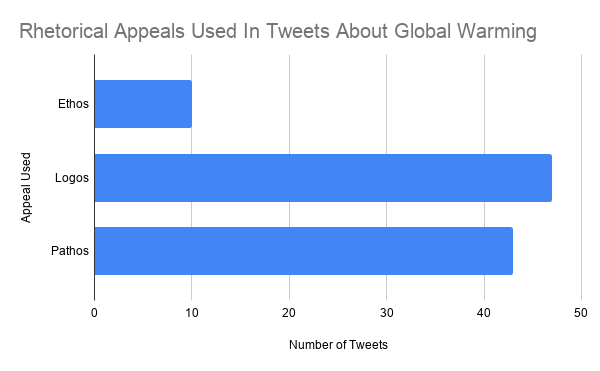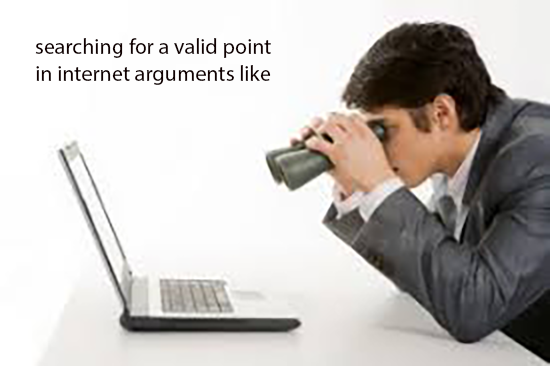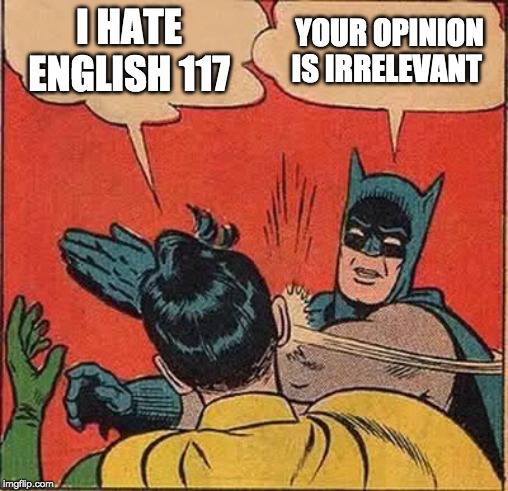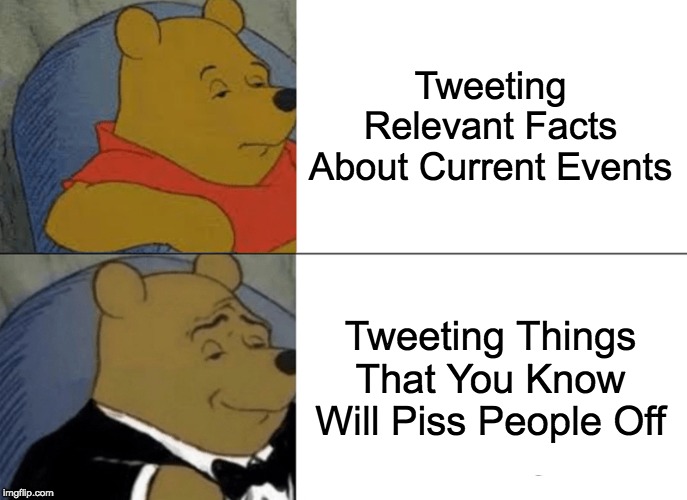Dave's Portfolio
December 6, 2019
Introduction:
The great Albert Einstein once said, "Creativity is intelligence having fun." When reflecting on my time spent in this course and all the different projects I have completed, creativity is the main underlying theme that comes to mind. As someone who has spent the majority of my time in college taking courses related to Health Sciences and other quantitative topics, I never had many opportunities to truly explore my creative side. The beauty behind "Arguing on the Internet" is that this course opened my eyes to the many creative ways in which arguments could be expressed via online media. The ways in which these projects forced me to be creative are explained throughout this portfolio.
Another theme that emulates much of the work completed in this course is critical thinking. Critical thinking is formally defined as, "the objective analysis and evaluation of an issue in order to form a judgment." Much of the course work required me to analyze different aspects of online media and arguments within that form of media. Throughout this analysis, I was able to formulate my own judgements on them, which guided me through my creative processes and allowed me to create arguments via different formats, which will be discussed as I go through each of the projects completed in this course.
Furthermore, the theme of collaboration also came up numerous times in English 117. Much of the course work completed revolved around being able to collaborate with our peers as well as collaborate with previously created videos/other types of media. Without collaboration, I feel that this course would have fallen short in its goal of introducing and analyzing the many ways in which arguments can be portrayed through the internet. In some projects, such as the podcast, collaboration was essential to creating the project itself. In other projects, collaboration manifested itself in the ability to successfully give and receive adequate feedback and integrate it into our work.
Portfolio Video:
Note to Professor: I realized at the last second that my computer must have been recording audio from my microphone while I was recording the snagit clip for the portfolio video. Below, I have attached my script for this portfolio video so you can follow along with what I am saying in the video. Sorry for the inconvenience.
Twitter Report:
The first assignment we were tasked with in this course was creating a report analyzing the argument related to a certain hashtag on Twitter. As seen in the link above, I chose to focus my report on #GlobalWarming. One of the key aspects of this assignment was being able to successfully interpret tweets containing this hashtag and group them into different categories. One of the categories that we were prompted to group these tweets into was their utilization of the three rhetorical appeals: ethos, pathos, and logos. Prior to completing this project, I had a general idea of what these rhetorical appeals were, but had little insight into how they would be represented via arguments made in Tweet-format. What I found was that the majority of tweets surrounding #GlobalWarming consisted of arguments that relied heavily on either logos, pathos, or some happy medium between the two. Prior to analyzing these tweets, I had expected more of them to utilize ethos, for I had learned in previous courses that ethos was a necessary component to have when constructing a sound argument. Contrary to this notion, a very minimal amount of the tweets I analyzed evoked the rhetorical appeal ethos. This finding sparked my curiosity and caused me to think critically about why there were not more tweets about global warming that used ethos. Throughout this critical thinking, I came to the realization that there are not many people out there that have actual authority to speak on this topic. In other words, the lack of tweets from actual environmental specialists or other scientists that have superior knowledge on global warming was the reason there was not many tweets containing #GlobalWarming that used ethos. The following bar graph represents how the tweets were grouped based off rhetorical appeal utilization.

All in all, the Twitter Report assignment required a great deal of critical thinking on my behalf. This critical thinking process involved having to sort tweets based off of their political affiliation, use of rhetorical appeals, and purpose of the tweet itself (to express an opinion, to inform, to make a joke).
Audio Essay:
Audio Essay Draft
After posting this audio essay draft to our class website page, I received feedback from Professor Anderson as well as my peers on how I could improve it. This feedback led me to normalize the audio in the clip, which allowed for the volume of my own voice to match the volume of the clips I had chosen to utilize. Furthermore, the feedback prompted me to use an outro music clip that more closely matched the tone of my audio essay. The revised audio clip can be found below.
Audio Essay Final
The theme of creativity was emulated in my completion of the audio essay assignment. Here, creativity was shown in the form of me having to think of creative ways in which I could weave in audio clips from youtube videos into my own audio essay. After pondering over how I could successfully accomplish this, I found that if I gave a short introduction to the speaker of each audio clip as well as made sure what the speaker in the clip was saying logically followed what I had been talking about prior to the clip, I could integrate this clips seamlessly. Prior to this assignment, I have never had to integrate others' words into my own essay. This also represents the theme of collaboration. Essentially, by thinking about how I could use clips of others speaking to enhance my own audio essay, I was collaborating with the speakers of those clips. All in all, the audio essay assignment forced me to be creative in the form of analyzing how I could seamlessly integrate audio clips and make them follow logically with the argument I was trying to make in my audio essay.
Podcast:
For this assignment, we were split into groups and tasked with completing a podcast relating to some aspect of internet culture. The main underlying theme that sums up all the work put into this project would be collaboration. First off, my group members and I had to collaborate to figure out which topic we would like to focus our podcast on. After brainstorming ideas, we all agreed that "cancel culture" would be the topic of discussion in our podcast. The remainder of our collaborative process consisted of deciding which sub-topics each group member would focus on and how we would smoothly transition from speaker-to-speaker. The google doc posted below gives a sneak peak into this collaborative process.
Once we had decided which specific sub-topics pertaining to "cancel culture" we wanted to focus on and which person would speak on each topic, our group was ready to record our podcast. This podcast can be found using the link below.
Once each group member had talked about the specific sub-topic they were tasked with, we decided that switching to a more conversational format at the end of the podcast would enhance its quality. This conversational aspect, where we essentially just bounced ideas and thoughts off on another for the purposes of discussion, required a great deal of collaboration on the behalf of my group members and myself. As a group, being able to become comfortable enough with each other so that we could express our own opinions regarding "cancel culture" was something that I did not expect to achieve when I was first introduced to this assignment. Furthermore, I would like to say that along with the fact that collaboration was key in order to successfully complete this assignment, it also taught me a lot about the general concept of collaboration. Having to work with each other and figure out each person's strengths/weaknesses as a speaker taught me a lot about group-work and collaboration as a whole. Also, being able to just sit down and have a conversation about "cancel culture" was something that made the 30-minute podcast go by faster than expected, which could not have been achieved without collaboration.
**I made an edited version of this podcast, where I normalized all volume levels. However, when attempting to post it to our class page, it said that the file size was too big. I wasn't sure what to do, but if you need me to email the revised version to you, I can.**
App Argument:
App Argument
https://xd.adobe.com/view/0e2d955e-4108-469d-6fa1-93c82f4a8049-781c/
The app argument was yet another assignment in which I had to explore my creative abilities. Prior to taking this course, I never really considered apps as a way to communicate an argument. Due to this prior notion, I had to force myself to sit down and think about in ways I could convey an argument through an app. Using Adobe XD software, I was able to create an app where users would click through a series of screens, ending with the overall message that the drinking age should be lowered to 18 years old. The audience I had in mind when creating this app were my peers, so I felt that the underlying message behind this app would resonate well with them. Through this app, users are provoked to think about other activities that they are allowed to do at 18, such as using tobacco products. I compared the death rates of activities such as using tobacco and eating fast food (which leads to obesity) to that of alcohol consumption. Through this comparison, I feel that I was able to argue that the drinking age should be lowered in the United States. It is my belief that using this method to communicate this argument was quite creative, which highlights the creative depths that this project took me through.
Meme Images:

The meme shown above was created by one of my classmates. I felt that this particular meme truly captured one of the main concerns related to internet arguments, which is that they often lack valid, logical support. Throughout this course, I was exposed to numerous internet arguments portrayed through different forms of media. When analyzing these internet arguments, I was quite pressed to find ones that supported their arguments using hard facts or evidence. This represents the theme of logic vs. emotion in online media. Much of online discourse consists of emotionally backed arguments that tend to "tug on people's heart strings" or cause them to empathize with a certain claim. This was a surprise to me, for prior to taking this class, I had mainly been exposed to internet arguments in the form of journal articles or other empirical sources. Unlike the many arguments I came across in this course, these empirical sources tended to utilize logic as opposed to emotion. Now that I have been exposed to both logical and emotional forms of internet arguments, the main takeaway I have is that a sound argument should both evoke emotion as well as have some form of logical support.
Memes Created By Yours Truly:


The memes posted above are the ones that I created. The first meme was created with the sole purpose of entertainment. I felt that my peers would find this meme to be funny and it also shows just how much I enjoyed this class (and how strongly I feel towards people who don't :) ) Furthermore, the second meme relates more to a broader theme of internet discourse. Earlier, in the twitter report assignment, I came to the realization that many of the argumentative tweets on twitter had the sole purpose of making others angry. I wanted to reflect on this finding and decided that I could successfully do so in meme-format.
Animated GIFs:
Although I have been exposed to a multitude of GIFs via social media, I have yet to see one that I felt portrayed some sort of argument. Therefore, in order to create a GIF that communicated an argument, I had to get a bit creative. In the first GIF I created (see link above) I decided to focus my argument around the sense of dismay I had towards the amount of work I was assigned to complete over Thanksgiving break. Thinking about how I could successfully communicate an argument against homework over break in GIF format was quite challenging for me. I decided to browse through some previously created GIFs, hoping that one of them would spark my curiosity. I found one where a baby seemed to look frightened, and decided that it would work perfectly for my argument.
In this project, creativity was emulated through the manner in which I had to "broaden my horizons" and think of ways in which I could communicate an argument through a GIF. A GIF created by one of my peers that I felt related closely to a certain aspect of internet culture is shown in the link below.
Comments:
Here are links to a collection of comments I have made throughout this course.
Baby we were born to Tweet Article
**These are not all the comments I made throughout this course, just examples of some**